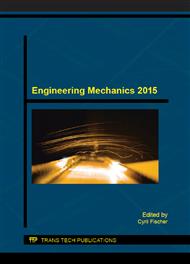p.641
p.649
p.657
p.665
p.671
p.677
p.685
p.693
p.703
Sensitivity of Acoustic Resonance Properties to a Change in Volume of Piriform Sinuses
Abstract:
Piriform sinuses (PS), side branches of the human vocal tract, produce extra resonances and antiresonances which influence the quality of produced voice. These acoustic resonant characteristics can be numerically simulated by 3D finite element models of the vocal tract with lateral cavities. Computations that use these accurate methods are very time consuming, therefore this study introduces a simplified 1D mathematical model to analyse acoustical effects of side branches. Although the 1D model cannot capture higher-frequency transversal mode shapes, the resulted changes caused by piriform sinuses partially correspond to recent findings of 3D computational models. New pair of resonances around 5 kHz followed by an antiresonance frequency were detected in the results of the model including PS. The first four resonance frequencies lying below the first new resonance of PS decreased with increasing PS volume and similarly both the new resonances of PS. The higher original resonances increased with increasing PS volume.
Info:
Periodical:
Pages:
671-676
Citation:
Online since:
January 2016
Authors:
Price:
Сopyright:
© 2016 Trans Tech Publications Ltd. All Rights Reserved
Share:
Citation:


